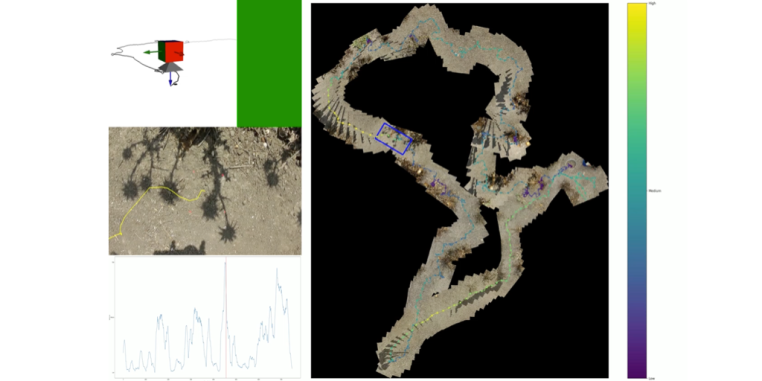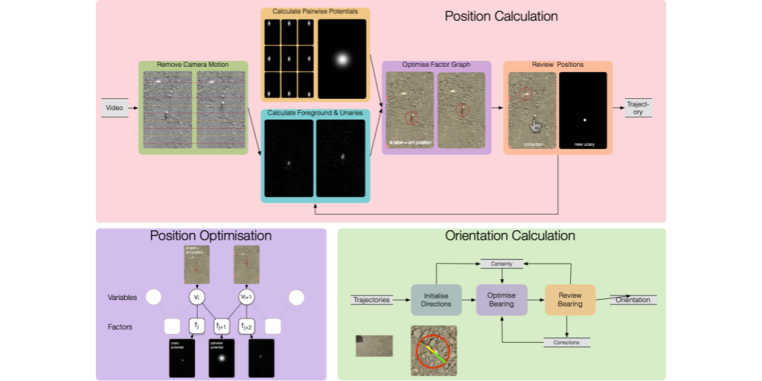Visual tracking of tiny objects in cluttered environments
Image-based tracking of animals in their natural habitats can provide rich behavioural data, but is very challenging due to complex and dynamic background and target appearances. We present an effective method to recover the positions of terrestrial animals in cluttered environments from video sequences filmed using a freely moving monocular camera. Our algorithm uses feature-based camera motion removal in combination with a generic motion model to formulate an energy function which is globally optimised using factor graphs. The algorithm is robust to occlusions, different appearances of the object and background and provides automatic initialisation.
In order to provide motion compensated animal trajectoreis, the continous frames need to be registered into a global coordinate system. This requires the integration of potentially thousands of frames from a monocular uncalibrated camera. We developed a nove image registration and mosaicing strategy which enables inter-video loop closure to robustly generate global scan panoramas of the underlying scenery.


Related Publications:
- Haalck, Lars, Michael Mangan, Barbara Webb, and Benjamin Risse. "Towards image-based animal tracking in natural environments using a freely moving camera." Journal of neuroscience methods 330 (2020): 108455.
- Risse, Benjamin, Michael Mangan, Luca Del Pero, and Barbara Webb. "Visual tracking of small animals in cluttered natural environments using a freely moving camera." In Proceedings of the IEEE International Conference on Computer Vision Workshops, pp. 2840-2849. (2017)


